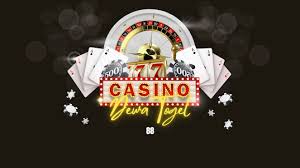Slot machines, often called “one-armed bandits,” have been a staple of casinos worldwide for over a century. Their colorful lights, slot gacor, and simple mechanics attract millions of players every year. In this article, we’ll explore the history of slot machines, how they work, and tips for playing them wisely.
The History of Slot Machines
The first slot machine, known as the Liberty Bell, was invented in 1895 by Charles Fey in San Francisco. This mechanical machine featured three spinning reels and five symbols: horseshoes, diamonds, spades, hearts, and the Liberty Bell. Players pulled a lever to spin the reels, and the machine would pay out if they landed on a winning combination.
Over the decades, slot machines evolved from mechanical devices to electronic machines. In the 1960s, the first electromechanical slot machines emerged, allowing for more complex gameplay and larger jackpots. By the 1990s, the introduction of video slots changed the landscape entirely, enabling the creation of innovative themes and bonus features.
Today, online casinos have taken slot gaming to new heights, offering a vast array of games accessible from the comfort of players’ homes.
How Slot Machines Work
Basic Mechanics
A traditional slot machine consists of three or more reels that spin when a player pulls the lever or presses a button. The goal is to land on matching symbols across one or more paylines. Each machine has a random number generator (RNG) that determines the outcome of each spin, ensuring fairness and randomness.
Paylines and Bets
Players can often choose how many paylines to activate and how much to bet per line. Activating more paylines increases the chances of winning but also raises the total bet amount. Understanding paylines is crucial, as winning combinations vary from game to game.
Payout Percentages
Each slot machine has a programmed return to player (RTP) percentage, usually ranging from 85% to 98%. This percentage represents the amount of money returned to players over time. For example, a slot with a 95% RTP will return, on average, $95 for every $100 wagered. However, this is a long-term statistic, and individual sessions may differ significantly.
Bonus Features
Modern slot machines often include bonus features like free spins, multipliers, and mini-games. These features add excitement and can significantly increase potential winnings. Understanding how to trigger and maximize these features can enhance the gaming experience.
Tips for Playing Slot Machines
- Choose the Right Machine: Different machines have different RTP percentages and volatility levels. Research and select machines that offer the best chances of winning based on your budget and playing style.
- Set a Budget: Determine how much you’re willing to spend and stick to that budget. Avoid chasing losses, as this can lead to overspending.
- Take Advantage of Bonuses: Many casinos offer sign-up bonuses, free spins, and loyalty rewards. Use these promotions to increase your playing time without risking more of your own money.
- Play for Fun: Slot machines are primarily a form of entertainment. Enjoy the experience, and don’t get too caught up in winning. Remember, the odds are against you in the long run.
- Know When to Quit: Set win and loss limits. If you reach either limit, it’s best to walk away. Knowing when to stop can prevent regret and keep your gaming experience enjoyable.
Conclusion
Slot machines continue to captivate players with their thrilling gameplay and potential for big wins. Whether playing in a land-based casino or online, understanding the mechanics and employing smart strategies can enhance the experience. Remember to play responsibly, and most importantly, have fun!
